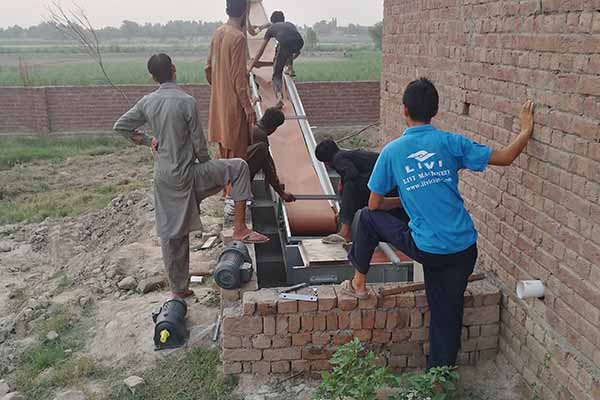Understanding and Implementing a 3-Layer Cage System in Poultry Farming
Time : 2025-07-02
The implementation of an effective and efficient poultry farming system is essential for the success of any farming venture. One such system that has gained popularity in recent years is the 3-layer cage system. This article delves into the intricacies of the 3-layer cage system, providing insights into its design, benefits, and implementation strategies, all while ensuring SEO optimization.
Introduction to the 3-Layer Cage System
The 3-layer cage system is a type of poultry farming setup that allows for the housing of chickens or other poultry in three stacked layers. Each layer is elevated from the next, typically by using a cage frame and wire mesh. This system is designed to maximize space utilization, improve biosecurity, and enhance productivity.
Design and Construction of a 3-Layer Cage System
1. Material Selection
The choice of materials for constructing a 3-layer cage system is crucial. High-quality steel or aluminum alloys are commonly used for the frame due to their durability and resistance to corrosion. The wire mesh should be of sufficient thickness to prevent injury to the birds while allowing for proper air circulation and waste management.
2. Frame Design
The frame of the cage system should be sturdy enough to support the weight of the poultry and the layers above. It is essential to ensure that the frame design allows for easy access for feeding, watering, and egg collection.
3. Wire Mesh
The wire mesh should be designed to prevent the birds from escaping while allowing for the shedding of droppings and waste. The mesh size should be fine enough to prevent the birds from reaching the floor below, but not so fine as to cause injury.
4. Layer Spacing
Proper spacing between layers is crucial for the health and comfort of the birds. The typical spacing is around 1.2 meters between the first and second layers, and 1.5 meters between the second and third layers. This ensures that the birds have enough room to move around and reduces the risk of injury.
Benefits of the 3-Layer Cage System
1. Increased Space Utilization
The 3-layer cage system allows for the efficient use of space, as it stacks birds vertically. This can lead to significant cost savings in terms of land acquisition and infrastructure.
2. Improved Biosecurity
The vertical stacking of the cages reduces the risk of disease transmission between birds. Each layer can be managed separately, making it easier to implement biosecurity measures.
3. Enhanced Productivity
The 3-layer cage system can lead to increased productivity due to better management of the poultry. The system allows for easier monitoring and management of the birds, leading to improved health and reduced mortality rates.
Implementation Strategies
1. Planning and Design
Before implementing a 3-layer cage system, it is essential to have a detailed plan. This includes determining the number of birds to be housed, the size of the cages, and the layout of the farm.
2. Training
Proper training of farm staff is crucial for the successful implementation of the 3-layer cage system. Staff should be trained on how to handle the birds, feed them, and manage the system effectively.
3. Regular Maintenance
Regular maintenance is essential to ensure the longevity and efficiency of the 3-layer cage system. This includes inspecting the frames and wire mesh for any signs of wear and tear, and cleaning the system to prevent the buildup of waste and disease.
Conclusion
The 3-layer cage system is a versatile and efficient poultry farming setup that offers numerous benefits. By understanding its design, construction, and implementation strategies, farmers can maximize their productivity and profitability. As the demand for high-quality poultry products continues to grow, the 3-layer cage system is likely to become an increasingly popular choice among poultry farmers worldwide.












